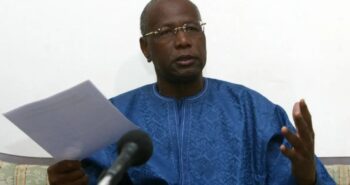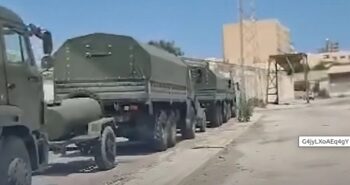A renewed struggle this summer over Libya’s main oil export zone cut sales in half, squeezing hard currency supplies amid outcry about mismanagement of hydrocarbon revenues.
To build trust, Libyan and international actors should review public spending and move toward unifying divided financial institutions.
PART ONE
What’s new? Fighting in June in Libya’s “oil crescent”, a coastal area home to most of its oil export terminals, led to a brief military takeover of oil installations and, subsequently, an attempt to deepen the institutional schism between the internationally recognised government in Tripoli and its eastern rival.
Why does it matter? These scuffles halved Libya’s oil exports, causing a dramatic drop in hard currency revenues and a shock to an economy heavily dependent on imports of consumer goods and already on the verge of col-lapse. A crisis was averted when the eastern government reversed course, but underlying grievances remain unresolved.
What should be done? The first step forward is an international review of the two rival Central Banks’ operations, which should lead to the banks’ reunification. Other steps include greater UN engagement with the east and addressing the question of securing petroleum facilities in future negotiations on the restructuring of the security sector.
The nearly month-long standoff over crude oil export terminals in eastern Libya is over. But another could soon emerge if the underlying causes of the conflict are not addressed.
On 11 July, the Libyan National Army (LNA), the force that controls the east, announced that it would resume collaboration with the National Oil Corporation (NOC) based in the western city of Tripoli, reducing the risk of deepening the country’s institutional divides and worsening its already profound economic crisis.
But Libyan and international stakeholders must capitalise on the LNA’s decision by easing competition for control over the country’s resources and financial institutions and tensions over the mismanagement of public funds. Otherwise, popular grievances will persist and renewed armed confrontation is possible.
The oil terminals crisis unfolded in three stages. It started on 14 June with an offensive led by Ibrahim Jedran, a former Petroleum Facilities Guard commander, in the so-called “oil crescent”, an eastern coastal area from which more than half of Libya’s crude oil is exported.
Jedran’s attempt to seize control was short-lived: the Libyan National Army recaptured the oil crescent within a week.
In late June, the struggle evolved into a larger feud over control of oil and gas revenues. The LNA’s commander, Field Marshal Khalifa Haftar, announced that he would no longer allow the Tripoli-based NOC to manage oil sales from eastern terminals, putting in charge a previously inactive Benghazi-based NOC established when state institutions split in 2014.
International condemnation was swift, as the eastern NOC has no legal authority according to UN Security Council resolutions. The result was an immediate shutdown of oil sales from eastern Libya: there were no buyers for oil sold by an illegal entity.
The country’s exports fell by 50 per cent, further starving the economy of hard currency. Haftar reversed course on 11 July, under intense international pressure and encouraged by several gestures by Tripoli.
Most important was the request made by the head of the Presidency Council of the internationally recognised Government of National Accord, Faiez Serraj, to the UN Security Council to establish an international committee to oversee an independent review of the disbursement of funds by Libya’s Central Bank.
Haftar has also demanded such a review. He and his supporters also see opportunities to push for a new “unity” government and to reopen the question of who should run the country’s economic and financial institutions.
Neither a unity government nor new leadership at economic and financial institutions will be easy to achieve, given deep institutional divides, accumulated mistrust since 2014 and, most important, conflicting interests among Libyan actors jostling for positions in a new set-up.
International stakeholders’ strict adherence to the Libyan Political Agreement, the UN-approved governing framework in place since December 2015, will also limit efforts in this direction.
For this reason, the parties should not miss the opportunity provided by Serraj’s call on the UN to review the Central Bank’s disbursements. It is an essential first confidence-building step that could pave the way for unifying the country’s divided institutions.
The two sides have yet to agree on whether the review should include a financial audit, who should carry it out or with what precise objective. The UN Support Mission to Libya (UNSMIL) could help them define the terms. Ideally, the review would be carried out by an international auditing firm with the support of UNSMIL, the World Bank and the International Monetary Fund.
The aim should be to produce a transparent overview of the Central Bank’s financial transactions since 2014 as a basis for the government’s monetary and fiscal policies rather than investigating alleged corruption or dictating who should be in charge of the institution.
Such a review would be insufficient to resolve the economic crisis, root out endemic corruption or prevent a military escalation. But it would send a strong signal that stakeholders are serious about bridging the country’s divides, reunifying the Central Bank and stabilising the country.
To reach these goals, UNSMIL will need to increase its footprint in eastern Libya and act as a bridge between the Tripoli-based institutions and their rivals in the east, which will have to be engaged to end the institutional divides.
Additionally, it should help Libyan authorities flesh out a new consensual strategy on the composition and chain of command of forces deployed to secure hydrocarbon facilities to prevent competing claims of legitimacy from becoming a new trigger for war.
The events in the oil crescent should remind everyone that Libya’s conflict has economic as well as political and military dimensions. Any strategy aimed at stabilising the country must address all three components in an integrated manner.
Policymakers – including the UN, relevant member states and Libyan authorities – recognise the conflict’s many layers. Yet, over the years, they have continued to prioritise the crisis’s political dimension and offered mainly political solutions – most recently, elections – to unite the country.
Without more progress to heal the rifts in the country’s economic and financial institutions, military and political divides are likely to become further entrenched, rendering the prospect of a political settlement all the more remote.
Competition for control of oil and gas export installations and revenues has emerged as a main driver of the conflict that has divided Libya since 2014.
This competition has manifested itself in a military struggle over the so-called oil crescent, a strip along the eastern coast of the Gulf of Sirte where four of Libya’s six hydrocarbon export terminals are located and through which more than 50 per cent of its crude oil exports leave the country.
The past four years have seen at least six offensives by rival forces to seize this sparsely inhabited area, the latest in June 2018. Each attack caused many deaths, widened social rifts and did extensive damage to the facilities, reducing Libya’s oil export capacity and inflow of hard currency.
The competition has played out as well in an equally debilitating political battle over governance of the country’s main financial institutions: the National Oil Corporation (NOC), which manages hydrocarbon production and export, and the Central Bank of Libya, which gathers revenues from oil sales.
Hydrocarbon revenues are Libya’s lifeline. Prior to the 2011 war, Libya produced 1.65 million barrels per day of crude oil and 594 billion cubic feet of natural gas.
Sales generated up to 96 per cent of government revenue and accounted for 65 per cent of gross domestic product (GDP), allowing the Libyan state to amass cash reserves and run a debt-free economy until 2013, when armed groups’ forced closures of wells, pipelines and export terminals, mainly in the oil crescent, caused massive shortfalls in government revenues.
The shutdown of the oil crescent’s terminals between 2013 and 2016 by Ibrahim Jedran, a local commander of the Petroleum Facilities Guard turned leader of a short-lived movement for the autonomy of eastern Libya, was one of the main reasons (alongside other closures in the west of the country) that Libyan oil production plummeted from 1.4 million barrels per day in early 2013 to less than 400,000 barrels per day in early 2016, and oil sales revenues dropped from $40 billion to a meagre $4.6 billion over the same period.
The drop in revenues, to which lower global crude oil prices also contributed, combined with out-of-control spending from 2011 onward, caused Libya’s fiscal deficit to mushroom: it was 44 per cent of GDP in 2014, 77 per cent in 2015 and 63 per cent in 2016.
Although hydrocarbon production increased throughout 2017, the budget deficit held at 26 per cent of GDP, forcing the Central Bank of Libya to draw down reserves and limit the availability of foreign currency for imports for the fourth consecutive year.
In 2018, oil revenues accounted for almost 90 per cent of government income and remained the main source of foreign currency needed to pay for imported consumer goods, on which Libyans are heavily dependent in the absence of an industrial sector.
Mismanagement and corruption have conspired to further drain finances. Austerity measures, cash shortages (including of foreign currency) and poor political decision-making have led to a breakdown in public services.
Against this backdrop, rival political and military forces within Libya have sought to exploit popular anger at the intolerable status quo.
The struggle for control of the oil crescent and its wealth stands at the heart of this confrontation. Given Libya’s heavy reliance on oil and gas revenues and how incendiary the debate over the management of state funds has become, the questions of who guards and administers oil production and export facilities, and how oil revenues accruing to the Central Bank are allocated, are central to the conflict and how to resolve it.
The struggle persists despite the fact that, or perhaps because, international efforts to end Libya’s war have reinforced Tripoli-based institutions’ monopoly on these matters.
The 2015 UN-backed Libyan Political Agreement conferred international recognition upon a power-sharing body called the Presidency Council, headed by Faiez Serraj, which installed itself in Tripoli in early 2016.
UN Security Council resolutions recognised the Tripoli-based Central Bank and the Tripoli-based NOC as the sole legitimate institutions of that nature. According to the 2015 pact, the Presidency Council oversees the allocation of state funds deposited in the Central Bank.
The crisis that crippled crude oil production and export in June-July 2018 reflects these political divides.
The Presidency Council and the government over which it presides, the Government of National Accord, were supposed to bridge the political and military divides that split the country in 2014 when two rival administrations emerged after contested parliamentary elections: one in Tripoli and another in the east.
But the Tobruk-based House of Representatives, refused to recognise the 2015 agreement or the resulting government in Tripoli, instead continuing to confer legitimacy on a rival east-based government (in al-Beyda) with its own parallel Central Bank (also located in al-Beyda) and National Oil Company (based in Benghazi).
The political split also caused a rift in the security apparatus: the House and eastern government recognise the Libyan National Army, a coalition headed by Field Marshal Khalifa Haftar that controls most of eastern Libya, while the Tripoli-based government has its own chain of command over units nominally loyal to it.
Overcoming these multilayered divides is paramount if there is to be a lasting negotiated solution to the Libyan conflict.
The crisis that crippled crude oil production and export in June-July 2018 reflects these political divides. The June attack on the oil crescent stemmed from rival claims of legitimacy by two parallel forces in charge of protecting the installations, each calling itself the Petroleum Facilities Guard.
Historical resentment in the east of the central government’s distribution of national wealth played a role; so did anti-Islamist narratives widespread in the east (often boosted by regional rivalry) that portray the Tripoli authorities as agents of the Muslim Brotherhood; and so did political leaders’ personal ambitions.
This report examines what sparked this latest crisis, how it unfolded and what has happened to settle it, at least for now. It argues that unresolved underlying tensions, if not proactively managed, could ignite another crisis within months.
It is based on Crisis Group’s extensive reporting since 2014 on Libya’s oil industry, its economic institutions and the role these play in the conflict, including in the oil crescent.
It stresses the centrality of the economic dimension to Libya’s civil war and the need to place oil economics at the heart of UN-mediated peacemaking efforts.
…
Continues in Part 2
_________________




